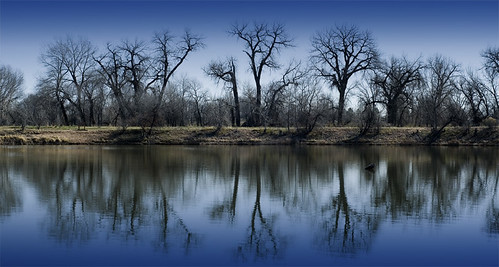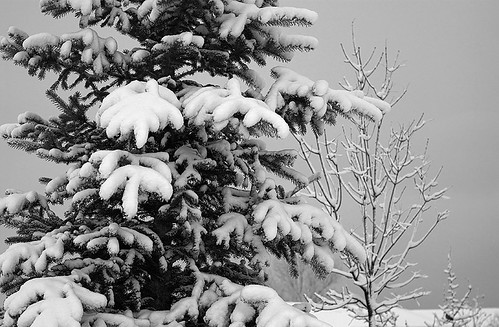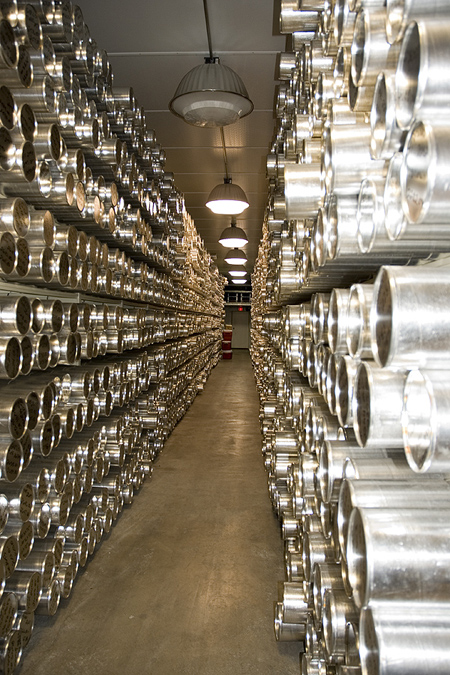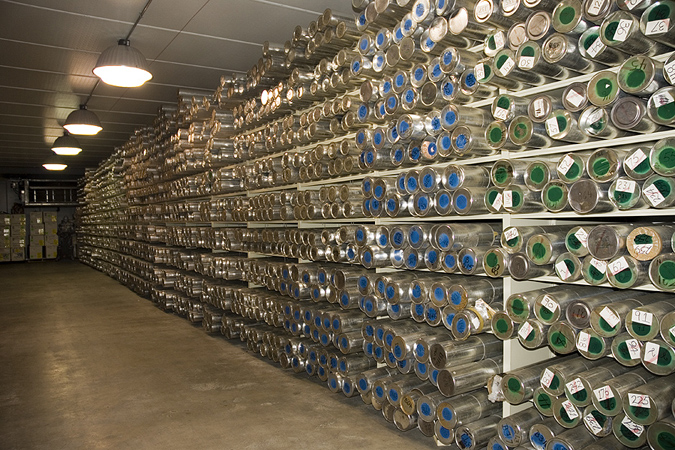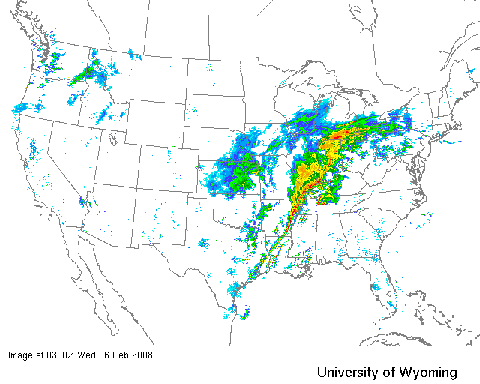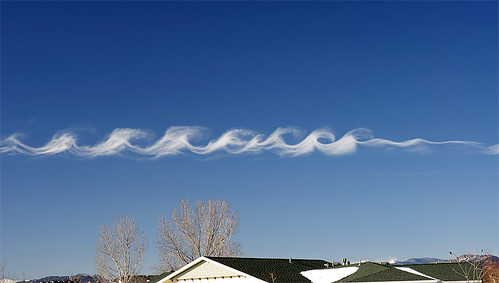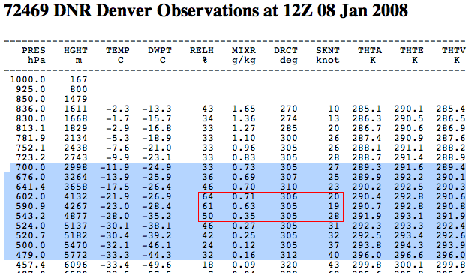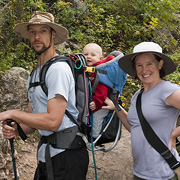Hanging out with an Astronaut
Our group was lucky to have Piers Sellers come out to talk and spend the day discussing his research with us this week. Apart from being an incredible, and very accomplished climate scientist (ie my current career track), he has also flown on two different shuttle missions to the International Space Station! In the course of those two mission he has logged 41 EVA hours in 6 different spacewalks.
Piers (I tried to call him “Dr. Sellers” and he made fun of me) gave a great talk about what it’s really like to go into space. I was surprised by little facts like it only takes about 3 minutes to reach orbit in the shuttle, that Russian cosmonauts are so superstitious that they all pee on the wheels of the shuttle before getting in, and that the inside of a space suit smells like bacon on an EVA.
After spending the day at the department, my adviser threw a very nice party for Piers, and Mark happily came out to meet him. We all three had a great conversation about rock climbing, and Piers said that his experiences climbing in the mountains were “miserable.” Ah well, I guess it’s not for everybody!
Top 10 Signs of Spring in Fort Collins
Colorado has it’s own version of spring. Where other places have daffodils and tulips covering the yards, the signs of a new season in Fort Collins are slightly different.
10. My daily outfits go from one warm top plus down-coat to three light layers that can be added or removed as necessary.
9. Woodpeckers on our rooftop bathroom fan covering. I guess they like the echoes this time of year.
8. Our stored freezer food is dwindling.
7. The bike racks in Old Town start to fill up.
6. The news is filled with discussion of water access rights.
5. The town’s yards and barns are filled with baby cows, baby goats, and baby kittens.
4. I get sunburnt while rockclimbing.
3. All of Liv’s fur falls off.
2. The kayaks begin appearing on top of cars.
1. The temperature was 80F two days ago, 25F yesterday, and 50F today!
Windy
Quite the spring storm we’ve had blow through this week. I’ve seen just about everything the atmosphere can throw at us, including rain, wind, snow, freezing rain, and even giant ice balls flying out of the sky. There’s probably a technical term for that (large sleet?) but I’m not sure how to classify them. Anyway, here’s a shot from our front yard yesterday evening!
It always snows on my birthday
For as long as I can remember, I’ve always seen snow in the week before or the week after my birthday. Some of my more memorable birthday parties included my 12th – where we took a group of girls out for a picnic and kite flying at the big local sculpture park. Sounds nice, doesn’t it? Well, it would have been better if it had not snowed 6 inches two days before, and then we had two sunny 70F degree days afterwards. Needless to say, the mud was legendary.
This year, I woke up on the morning of St. Patties day to the usual assortment of winter storm warnings, blowing snow watches, and heavy snow reports.
Luckily, the storm moved south of us, and the forecasts for epic blizzard conditions fell through. But, we did get a lovely coating of spring snow. For a quick look at who got the most snow you can check out the snow reports page. And here is your pretty snow picture of the day!
Field Trip to the Ice Core Lab
As part of the Global Climate Change class I’ve been co-teaching at Colorado College, we’ve done a fair bit of work with ice core data and paleoclimate change. After finishing up the labs and projects, we took the class to the Ice Core Lab in the Federal Center at Denver. This is the storage and analysis facility for ice cores from all over the world, including the 2-mile long 400,000 year old ice in the Vostok core from Antarctica. There are more pictures from the day in the gallery.
We got to talk to a couple of guys who had just spent the summer in Antarctica drilling the first third of a new core in Western Antarctica. Their stories of difficulty in drilling were really incredible. This summer was a warm one in Antarctica, temperatures topped out near freezing some days! In order to keep the ice stable as they pull it out of the ground, 30ft at a time, they have to chill the building where the drilling is done to -30C! The core is about 5 inches in diameter, and the hole is filled with anti-freeze to keep it from freezing closed as they drill. It can take as much as an hour to lower the drill to the bottom of the hole and nearly two hours to pull the core out of the lower part of the hole.
The analysis rooms in the facility are kept at about -10C. Now, that is harsh working conditions for day-to-day science! The storage facility was much colder. We were all told to bring our coldest winter gear, and I was impressed at how well outfitted most of the students were for winter weather. I suppose that people in Colorado generally invest in full down suits and huge stocking caps as part of their skiing/snowboarding outfit. The temperatures of -30C to -40C in the storage room were cold enough to numb any exposed skin within a minute or two, but without any wind the rest of me was quite comfortable.
It was a fun way to spend the afternoon. At least, I thought so. Places like this ice core lab really give a glimpse into how adventurous and exciting the earth science can be!
Super-Dooper Big Fat Awful Tuesday
So yesterday was called “Super Tuesday” by the MSM outlets due to the large number of states which held primaries that day. It was also called Mardi Gras which means “Fat Tuesday” by French Catholics due to the day after being Ash Wednesday and the beginning of Lent. And I’m sure, in many parts of the Southeastern US it will be called by a different name, due to the largest outbreak of tornadoes in February in decades.
Update: Click Here to view the storm reports and Here for a good overview story from Bloomberg.
Conditions were ripe for heavy weather last night, as temperatures in the south-east climbed into the 80s during the day, and dewpoints followed upwards, almost into the 70s. A strong winter cyclone moved off the rockies and deepened as it blew across the plains. By the time the strong circulation hit the warm moist air of the southeast, deadly weather was almost inevitable.
There are reports now coming in of the warnings given to the areas hardest hit. The death toll would have been much higher, no doubt, without the diligent work of meteorologists throughout the country, and the warning networks we have installed. It was unfortunate that the bad weather hit on such a critical day, when people were out voting and caucusing, and perhaps not able to seek shelter as quickly as they needed to. It is also a little weird, but not unprecedented, to see tornadoes this early in the year. Severe weather like this comes from high temperature gradients, and the more warmer surface temperatures clash with cold polar air, the more we’ll see storm outbreaks like these.
More Kelvin-Helmholz Waves
My good friend Dougie B gave me a call while I was sniffling on the couch this afternoon and told me to run my sick butt outside into the cold and check out the cool clouds in the southwestern sky.
This was something I’ve never seen – wave clouds breaking in a clear blue sky. Usually there must be a whole lot of moisture around for something like this cloud to appear. There was some discussion as to whether these were originally triggered by a jet contrail or naturally occurring due to a layer of moisture in the air. Here is the sounding info from Denver this morning:
As you can see, there was a strong inversion over Denver this morning, way up at 400mb and some strong directional wind sheer associated with it, but that doesn’t make wave clouds break. What makes these clouds is the more subtle change lower down. Right around 600mb, there is an increase in relative humidity and a decrease in windspeed, but no change in wind direction. This little change can produce thin clouds. They break because the lower layer is moving slower than the upper layer, just like waves break on a beach as the lowest part of the water moves slower than the tops of the wave.

